I currently conduct research in the mining district in Datong. Yesterday, as I was coming back from a day of fieldwork in a coal mine area in the mountain, I decided to go down the hill by foot. I followed the main road along the ruins of a major village and there were two interesting findings: the ruins of different types of abandoned buildings in the village, and a derelict cinema lost in the mountain! I had to go back and realized that a lot of hidden places still remained. In the coal mine district, I had already found the ruins of a coal mine, and now this report is about the residential practices at the exit of the mines.
The interesting ruins of a half-demolished mining village
A few years back, a major urban renewal policy was carried out in the mining district. All the coal mine workers who lived in village houses located next to the coal mines were given the opportunity to buy apartments and move away to a new safer, more hygienic and comfortable residential district. That is why there are now many half-demolished villages on the hill and all the way down until the last town, which was the heart of local life. The town had an old center where most inhabitants moved out but the peasants were not given the same opportunities as the miners, so a few still live in the village.
Sometimes, despite the poor living conditions, it is worth looking closer at those village houses and taking pictures of them, like in the case of yaodong cave dwellings. On that day, I found a half-demolished house with a very interesting architecture, made out of bricks with sophisticated decorations on the doors and windows.

Unfortunately, the Chinese characters written on the facade had all been taken away, so I wondered if the house was built during the Japanese occupation (the coal mines of my research, just on the hill, were indeed built by the Japanese) or even before, during the Republican period1. According to my research on different blogs, it could have been a toll booth.

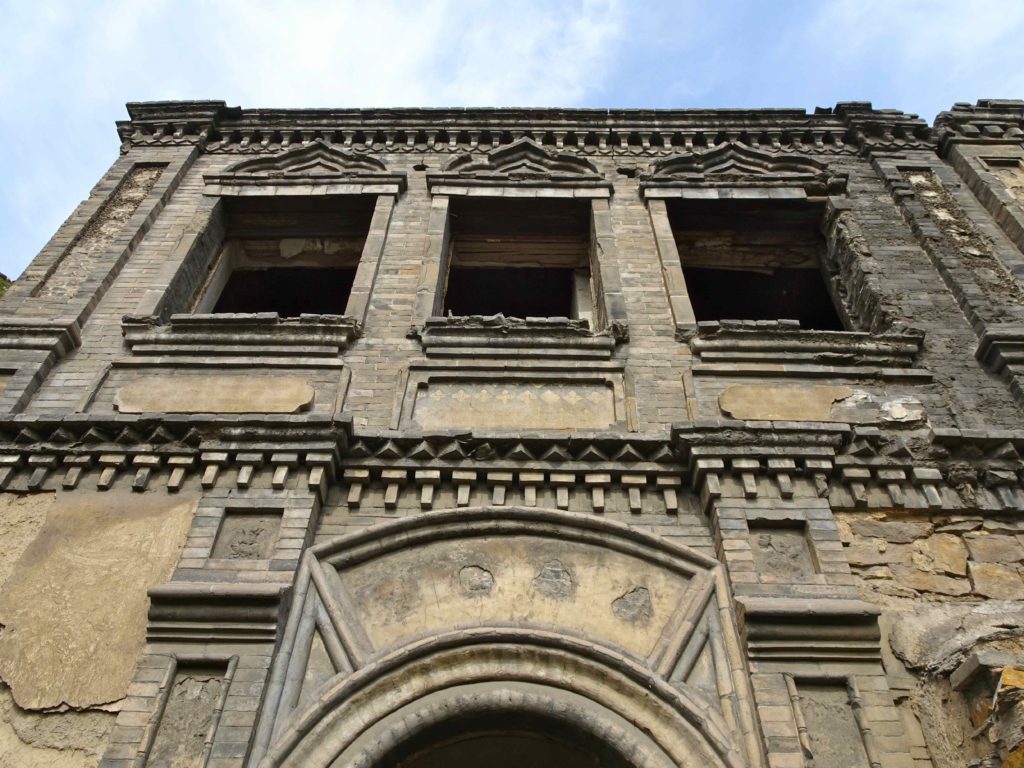

Going down the road, there were many former shops and restaurants that had been empty for the last six years, but their high density brought out traces of the past: according to interviews I did with the last villagers, this village used to be crowded and it had a lively atmosphere, when it filled with the many workers’ families coming down from the coal mines to have fun at night.


I also visited an old factory built in the 1960s (if I understood correctly) which produced metal tools to dig the coal. I also plan on exploring the bigger ones (I found really interesting and bigger abandoned factories in the town but the agents of social control – old villagers sitting outside – were still too reactive for me to illegally cross the gates).



In the main street of the village, a lot of shops and public services were planned in the 1970s, with a communist style and with famous slogans like « Serve the people ». They all closed down five to ten years ago.




The hair-dresser was the last working shop of the street.


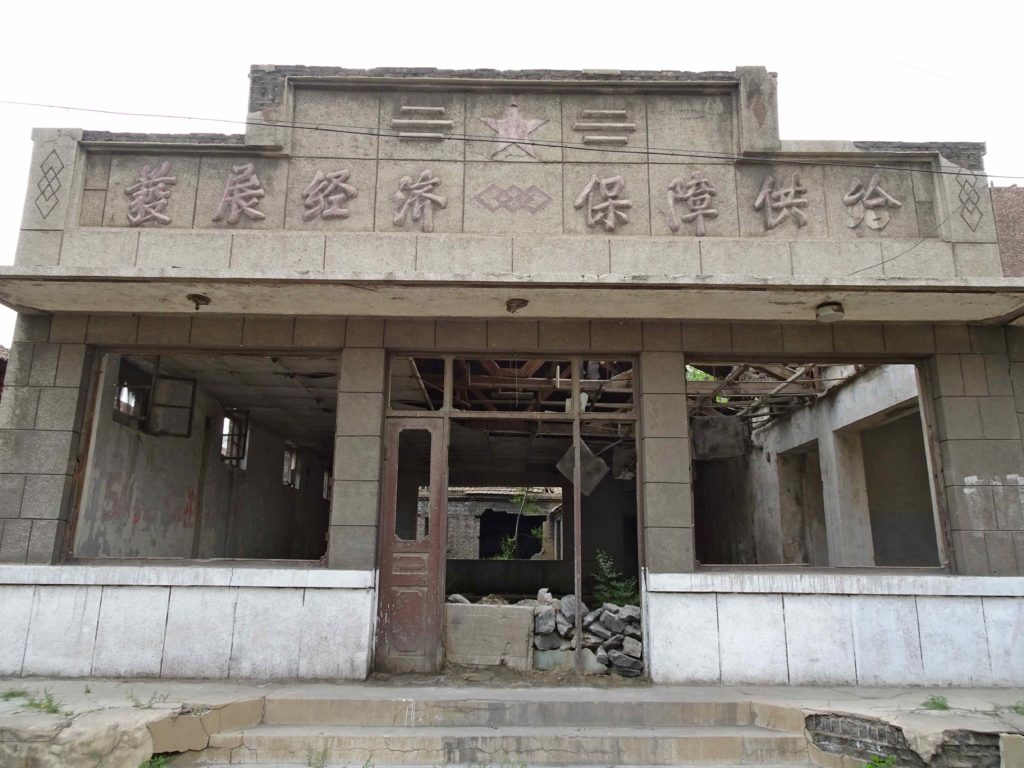

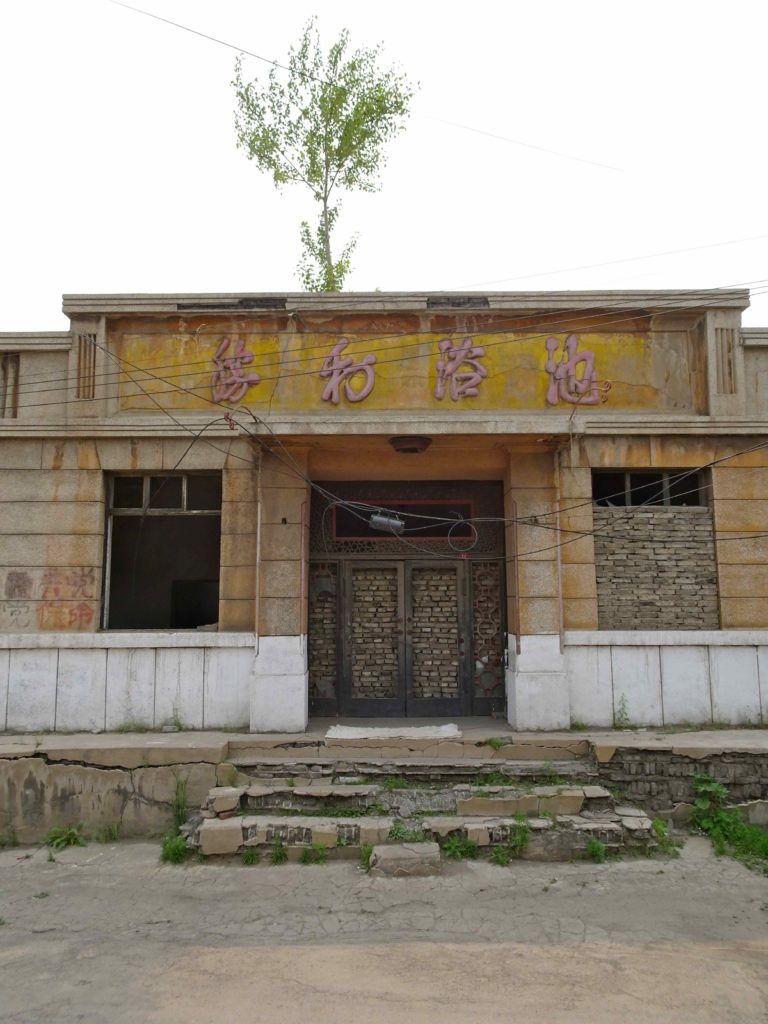



According to a local inhabitant, this next building used to be the local government a long time ago. It was completely abandoned when I visited it.


The town also had a very small local hospital.


In the village, some elements were much older than the 1950s.
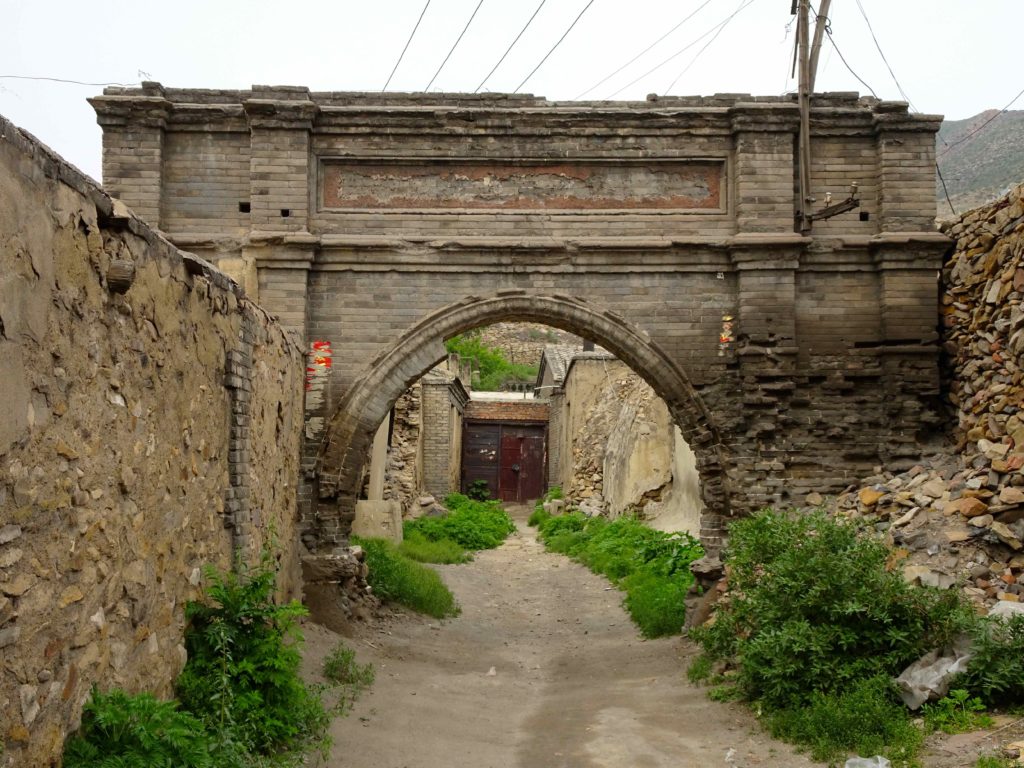

Some of the abandoned family houses had great historical value.


This house was built more than 130 years ago, according to the last inhabitant who lived alone now and told me to be careful because of the spirits who lived there too. The owner then was targeted as a rich land-owner during the communist period and his house was nationalized and divided to share between 25 families.





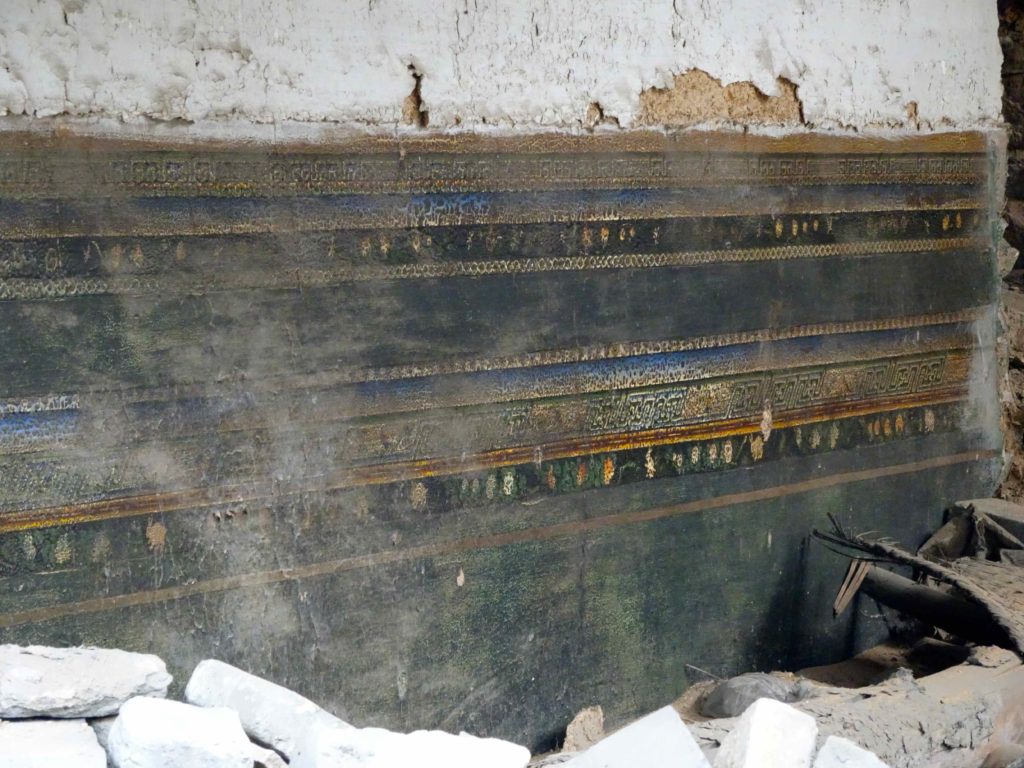
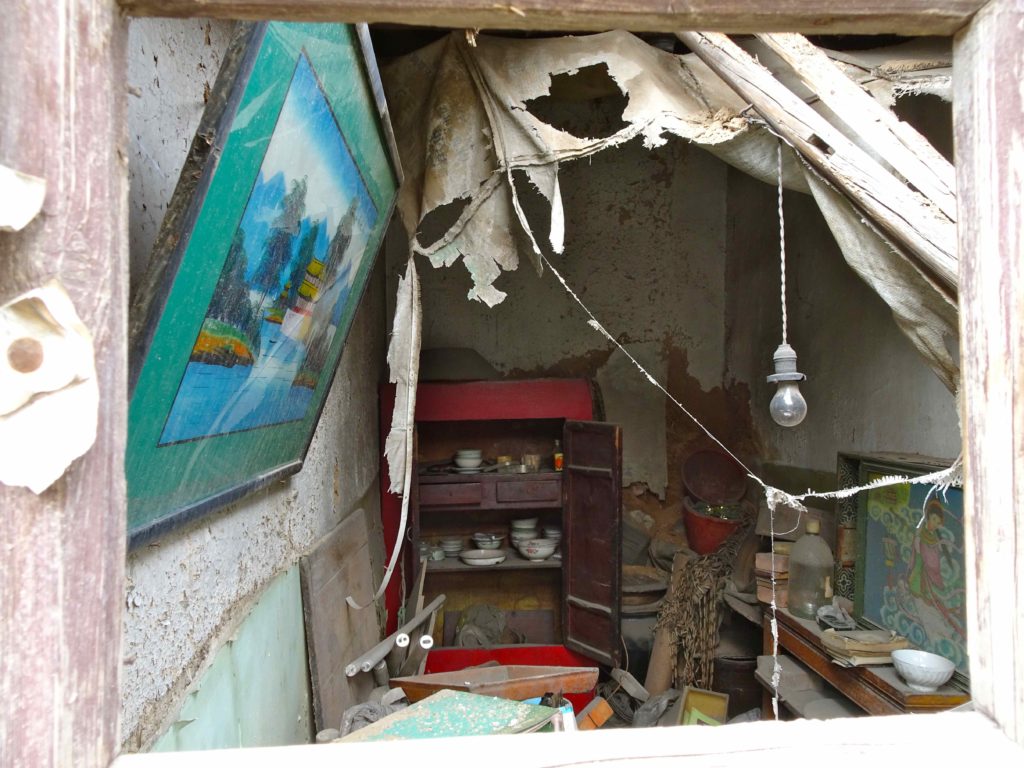
The collapsed buildings
Because the underground was dug into so much in the process of coal extraction, the village is dangerous to live in. Some buildings already collapsed.


Here I found the collapsed remains of an ancient architecture. You can see how deep the buildings can drop…
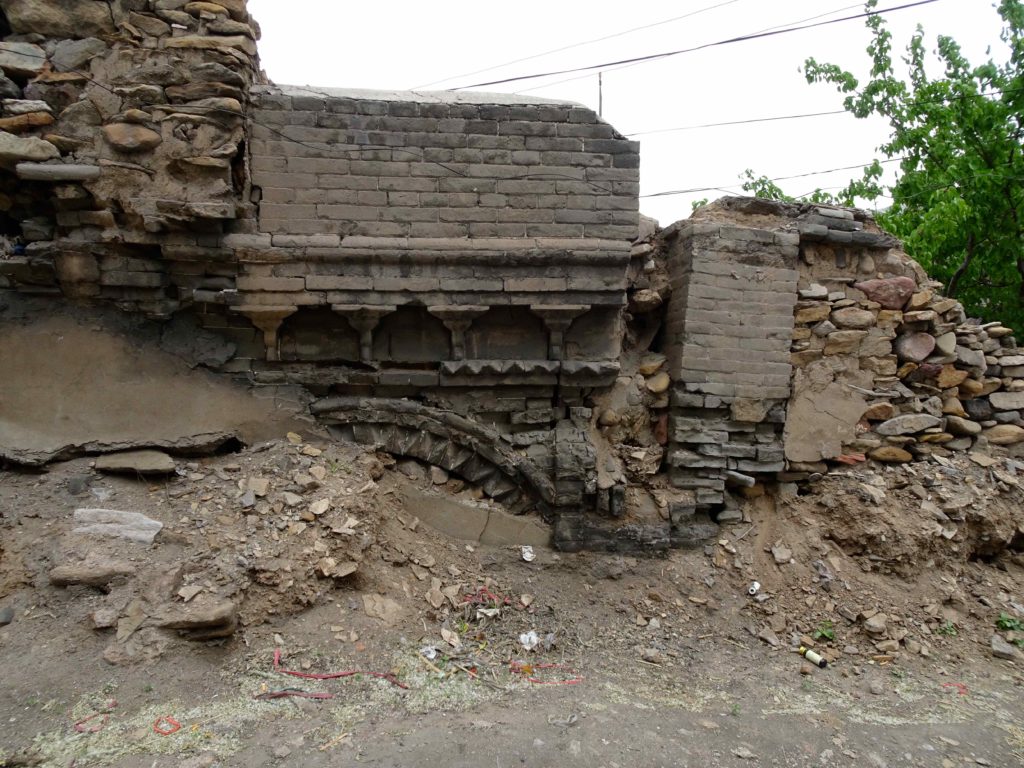
The derelict movie theater in the mountain
And last but not least, I found an old cinema which was built seventy years ago and abandoned for more than thirty years, according to an old man resting and chatting with his friends on the stairs. After more online research, I read that it used to be one of the four movie theaters directly administered by the Datong film company. It opened in 1952 under the name « Cultural palace for workers »2.

It was then renovated in 1979. It had three floors. On the ground floor, the main room for movie screenings had more than 900 seats. It was slowly abandoned from 1992.

I was surprised to learn that it had (according to the locals) been used partly as a parking place for the coal trucks during traffic jams and partly – how strange – as a dark place to grow mushrooms. But when I got inside, it was a carpentry.

Not much remained of the old movie theater even if one could look and find the last clues…

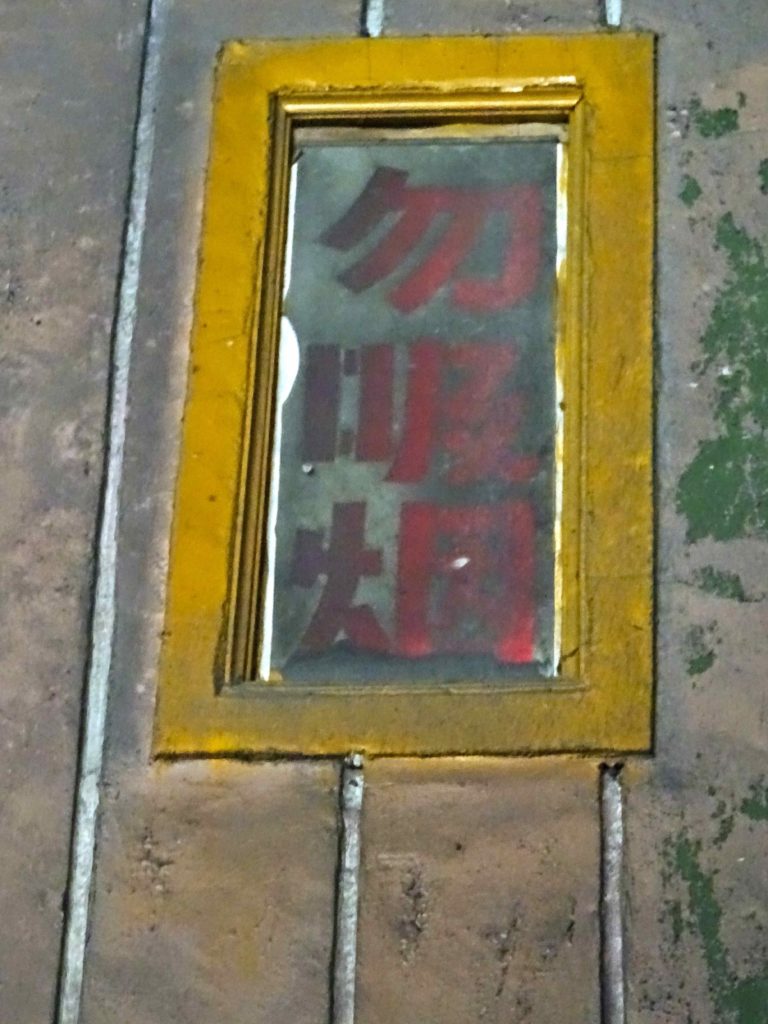

I hope this report was able to share in which way the ruins are witnesses of the town’s past glory. It was sad to realize that one of the last shops standing was… the tomb maker!

I would like to thank my friend Paul for his precious comments on this text.
If you are interested in the issue of sinking villages in Chinese coal-mining regions, you can also read this news report or this other one (but it was published after my findings, hehe).
- I must explain that the village existed before the coal mines but it grew along with the mining activity which developed there from the 1940s. ↩
- You can know more details thanks to this news report in Chinese. ↩

2 thoughts on “The ruins of a coal mining village / 废弃的煤矿村庄”